Symposium on Multiphase Flow and Statistical Physics, co-organized by the School of Energy and Power Engineering (EPE) of Huazhong University of Science and Technology (HUST) and the Faculty of Physics of St Petersburg University (SPBU), was held on April 1st. As the first academic activity of EPE for celebrating its 70th anniversary, this symposium is also the first meeting of HUST-SPBU Academic Exchange Month. Before the symposium, the opening ceremony of HUST-SPBU Academic Exchange Month was held online. Presided over by Chen Jie (Director of the Office of International Affairs of HUST), the opening was attended by Chen Jianguo (Vice President of HUST), Valeriya Malomuzh (Deputy Vice-Rector for International Affairs of SPBU), Luo Xiaobing (Dean of EPE of HUST), Alexei Titov (Vice Dean of Faculty of Physics of SPBU), and Alexander Shchekin (Head of Department of Statistical Physic of SPBU).
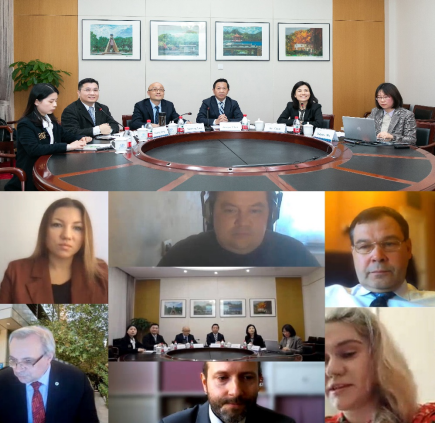
After the opening ceremony, six scholars from the Department of Statistical Physics of SPBU, EPE of HUST, and China Jiliang University reported their research progress on multiphase flow and statistical physics, and more than 60 students and faculty members attended the conference online. The meeting was hosted by Xie Mingliang, Associate Professor of EPE. He said that this conference was of great significance to promote the exchange of scholars and expand cooperation. He hoped that scholars could learn from each other at this meeting to advance the development of multiphase flow and statistical physics.
Prof. Alexander Shchekin, Head of the Department of Statistical Physics of SPBU, delivered a report entitled “Molecular-Thermodynamic Theory of Micellization and Solubilization”. Based on statistical physics and thermodynamics, he described the reasons and mechanisms of micelle formation, as well as their roles in polymers.
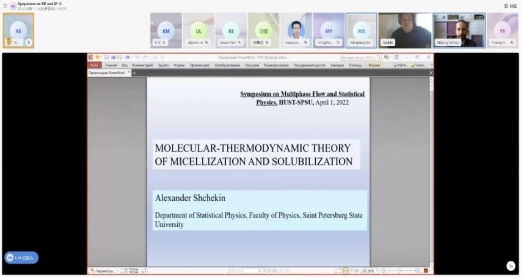
Prof. Yu Mingzhou from China Jiliang University mainly introduced numerical methods for solving Brownian Coagulation Equation. He first proposed Taylor-series Expansion Method of Moments (TEMOM) in the process of solving Brownian coagulation equation. Having been developed for more than a decade, this method is widely used in many fields, such as brownian motion, aerosols, and multiphase flows.
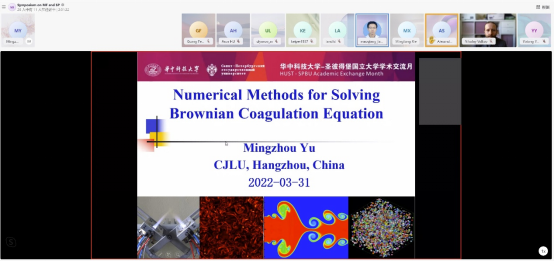
Prof. Dmitry Tatyanenko gave a report on “Nucleation Theory and Modern Equations of State for Hard Spheres”. Density Functional Theory (DFT), an important theory of modern molecular dynamics, is widely used in coagulation properties of molecules, computational physics, and computational chemistry. Through Density Functional Theory, Professor Tatyanenko obtained some important parameters such as chemical potential and free energy density during the formation of hard spheres. His research results will be published in one of the top Russian journals.
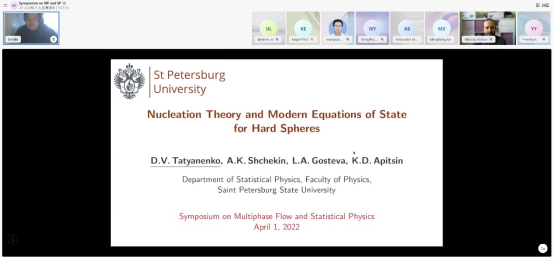
Prof. Feng Guang has been dedicated to developing molecular dynamics simulation technology for many years to study the energy storage mechanism of supercapacitors and batteries. He mainly introduced “Molecular Modeling of Energy Storage in Supercapacitors with Ionic Liquids”. Through molecular dynamics simulations of factors like different materials, environmental parameters, and molecular types, the variation rules of important properties such as capacitance, energy density, and power density of ionic liquid supercapacitors have been obtained. Prof Feng has published several papers in the sub-journals of Nature.
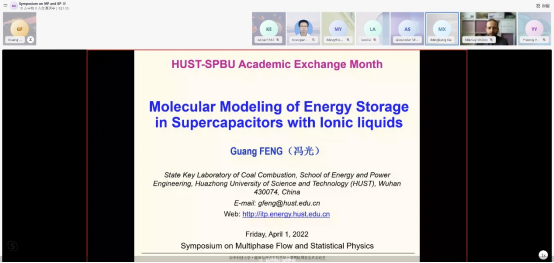
Prof. Nikolai Volkov gave a report entitled “Molecular Dynamics Modeling of Direct and Inverse Micelles”. Surfactants are widely applied to chemistry, industry, and daily life. By studying the shear viscosity and diffusion coefficient of ionized water, the evolution principle of polymers such as micelles was found.
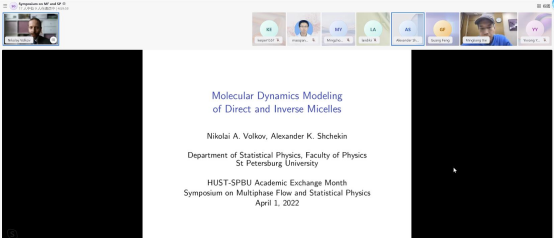
Dr. Jiang Maoqiang introduced “Subgrid Scale Motion Characteristics in the
Large Eddy Simulations of Particle-laden Turbulence and Structured Subgrid Model with the Particle-seen Fluid Velocity”. Through utilizing the Direct Numerical Simulation (DNS), the influence characteristics of sub-grid scale structure on particle dynamics were obtained, and a structured subgrid scale model of visible fluid particle velocity was constructed.
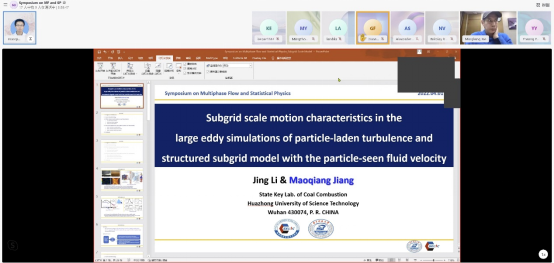
At the end of the symposium, scholars made in-depth discussions and exchanged ideas for cooperation based on their research directions. This symposium has provided scholars and students with a platform to exchange their thoughts and laid a foundation for further cooperation. Scholars are expected to meet offline after the pandemic to make further exchanges.




